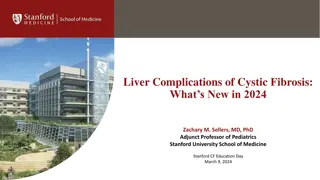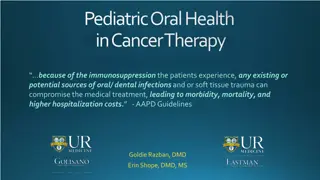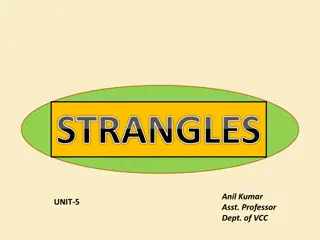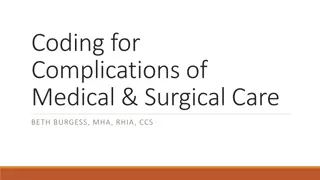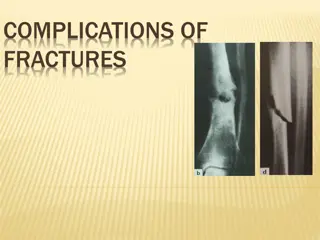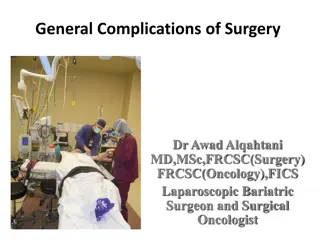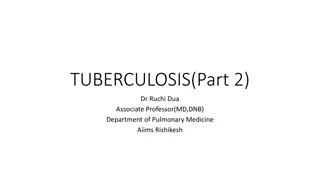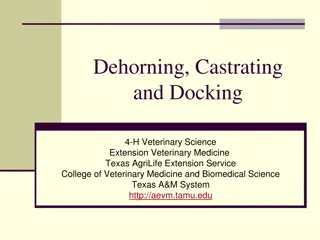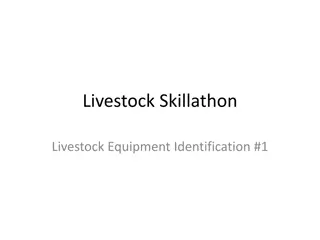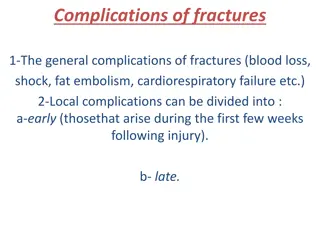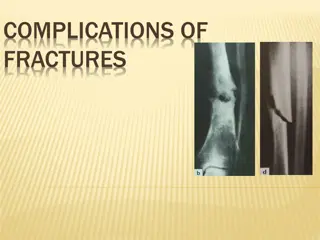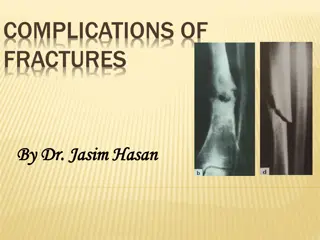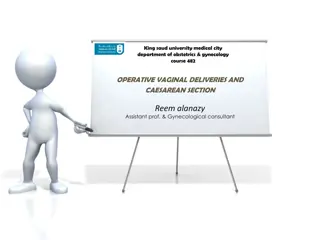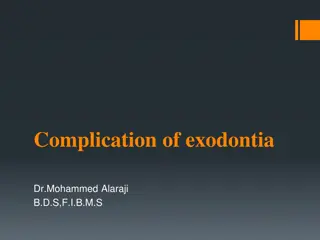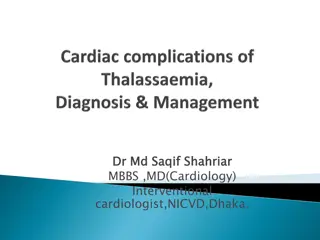
Complications of Dehorning in Livestock
Learn about the potential complications of dehorning in livestock, including caustic burns, thermal burns, blood loss, infection, fly strike, hypersensitivity reactions, and scurs. Understand how to prevent and manage these issues to ensure the well-being of the animals.
Download Presentation

Please find below an Image/Link to download the presentation.
The content on the website is provided AS IS for your information and personal use only. It may not be sold, licensed, or shared on other websites without obtaining consent from the author. If you encounter any issues during the download, it is possible that the publisher has removed the file from their server.
You are allowed to download the files provided on this website for personal or commercial use, subject to the condition that they are used lawfully. All files are the property of their respective owners.
The content on the website is provided AS IS for your information and personal use only. It may not be sold, licensed, or shared on other websites without obtaining consent from the author.
E N D
Presentation Transcript
COMPLICATIONS OF DEHORNING
Caustic burn This may occur when attempting to perform chemical disbudding. Chemical dehorning involves the use of caustic paste to destroy horn producing tissues. Caustic paste may: Be painful Irritate skin May run towards eyes if gets wet. This may cause severe optic irritation and burns. To prevent caustic burns to surrounding tissue, application of petroleum jelly is done. This prevent the paste from running down contours of the animal s face. The animal should also be kept in dry areas where rain is not an issue as wetting of the paste may cause caustic burns to surrounding tissue.
Thermal burn This may occur when attempting disbudding with hot iron techniques Thermal burns are painful to the animal. Thermal burns can become infected if untreated.
Blood loss This may occur when attempting to perform cup/tube dehorning or even Scoop/Barnes dehorning Blood loss should be controlled to minimize secondary complications such as shock and infection. Topical coagulants or application of hemostats may be used.
Infection Sinusitis is a major complication that occurs when frontal sinuses are exposed after horn removal. Infection may occur when: Post operation care is not adequate Wounds experience delay in healing Horns are attached to the skull, exposing frontal sinuses after horn removal. Sinusitis requires flushing of the sinuses with antiseptic solution and use of systemic antibiotics. Infection poses great threat to the animal s health as this can spread causing further illness and disease. Infection must be identified as early as possible and treated. Infection is a major complication when guillotine, wire and hand saw dehorning is done.
Fly Strike Parasites such as flies may lay eggs on newly dehorned animals. This gives rise to secondary infection. To prevent this, the farmer may use animal- safe fly repellants.
Hypersensitivity to analgesics and anesthetics Individual animals may experience hypersensitivity reactions to analgesics and anesthetics. If this occurs, immediately stop use of the drug and consider alternative drugs.
Scurs This is partial or complete regrowth of the horn after attempted dehorning. This is due to incorrect removal of corium. If this occur, proper dehorning technique may be repeated. This adds cost to the farmer and additional stress to the animal.
Skull fracture This may occur if proper restrained is not done. Trauma to the skull may result in fractures. This may be painful to the animal. Fractures may be unforeseen and therefore left untreated, causing the animal to be in distress due to discomfort and pain.

